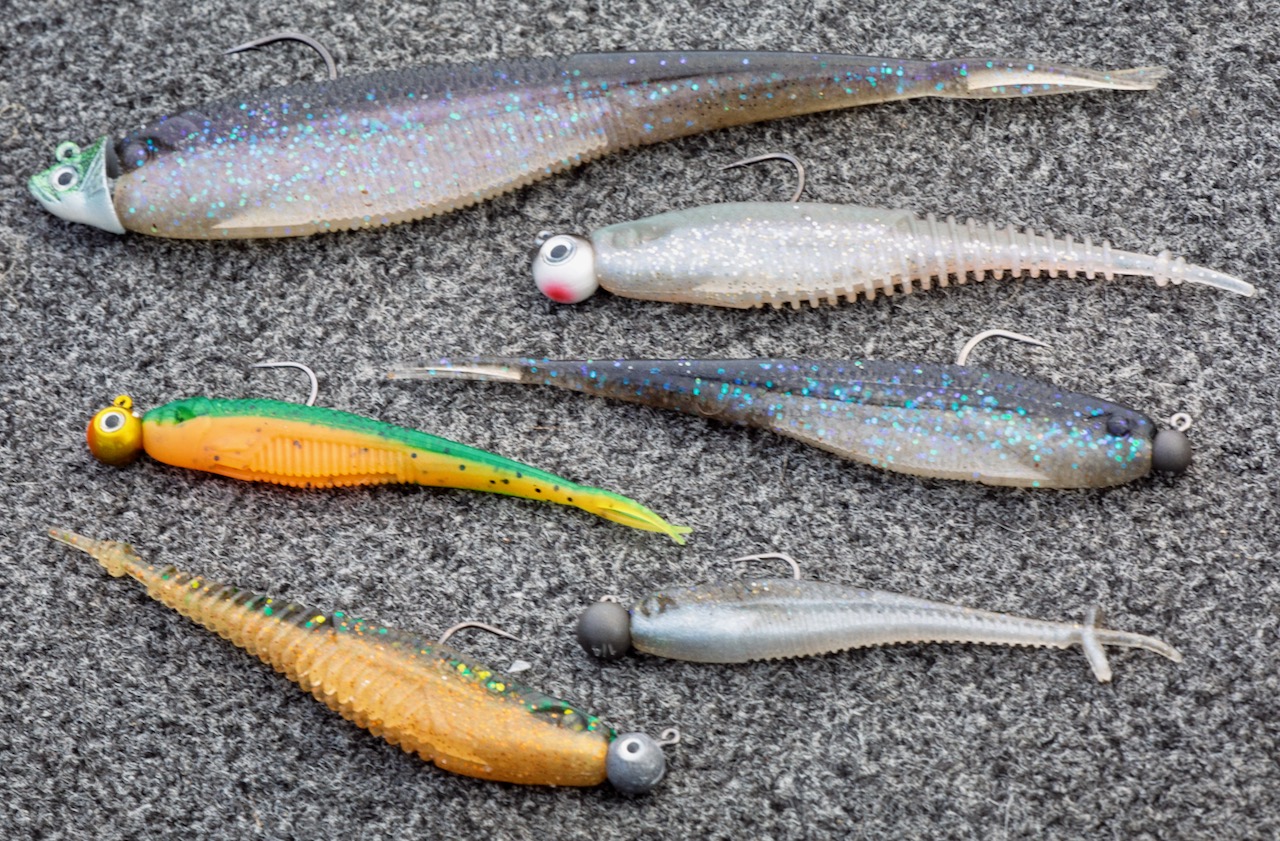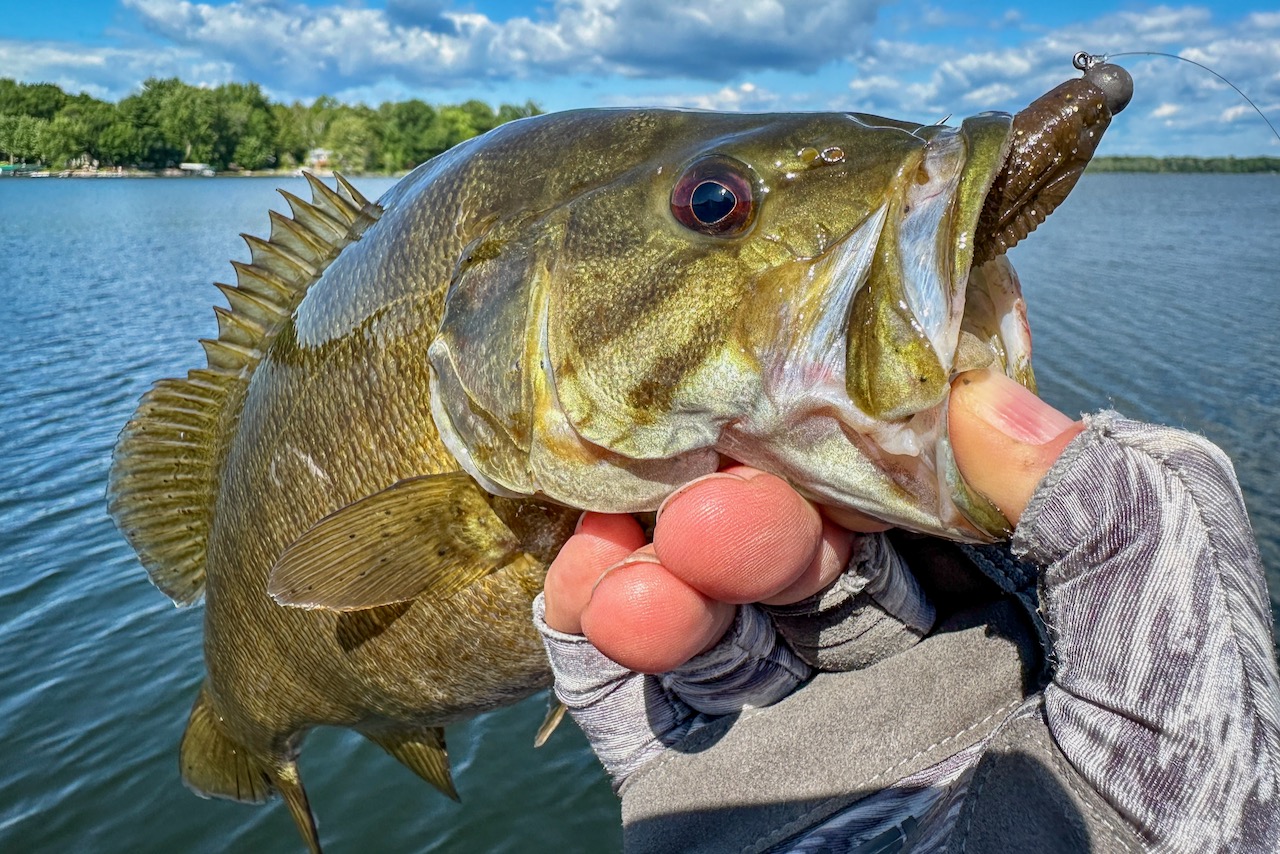SHAKE IT UP
How a simple tactic has revolutionized the way we catch bass
Advertisement

THE TECHNIQUE
The key elements of effective minnow shaking include the retrieve speed, bait size and colour, depth, and shaking cadence. There’s no one-size-fits-all formula, however. It’s still an evolving technique, with anglers continually adapting to catch educated fish. Even something as small as knot choice can influence your results. A loop knot might give your bait more freedom, for example, while a standard knot can offer more control. Experiment to find what works best for you.
Start by casting out your bait. If you’re fishing without electronics, you may need to briefly touch bottom just to gauge the depth before beginning a slow, steady retrieve. Then comes the magic. As you retrieve, shake your rod tip in a tight, rhythmic cadence so the jig rolls to one side, then pops back the other way with each slight pull. Be sure not to overdo the popping—the jig should rock subtly from side to side, looking like an injured minnow clinging to life. It triggers reactive strikes like nothing else.
Advertisement
THE MINNOW
A soft-plastic minnow with a straight tail design is critical. Save your twister tails, boot tails and paddle tails for swimbait presentations. With this technique, the resistance from those tail designs will keep the bait from flowing naturally and kill the action. Instead, a straight pintail or forked tail will effortlessly follow the body’s action and finish with a strike-triggering whipping action.
As for length and colour, a 3.75- to four-inch minnow in a natural baitfish pattern is a good starting point. You can choose between standard PVC or more durable TPE plastics. Both work, but they behave differently in the water. Experiment to see which one gets more bites.
THE JIGHEAD
The jighead is your bait delivery system, and it’s a big part of what will trigger strikes. Choose a weight that gets your soft-plastic to depth without overpowering it. A 3/16-ounce head is a solid starting point, but conditions may call for something heavier or lighter, so have plenty of options on hand. Keep in mind the weight of the jig will also dictate the speed at which you retrieve your soft-plastic. A heavier weight will allow you to work the bait faster, as well as deeper.
Advertisement
The hook size should match the bait’s body length. Avoid a long shank that will impede the natural bending action of the bait. And the hook gap should allow enough of the point to penetrate deeper soft-plastics. With a smaller hook, consider rigging the jig a little higher on the back rather than dead centre to achieve this. The hook’s bite—the height difference between the eye of the jig and the hook point—should also be a serious consideration when selecting a jig. Simply, a bigger bite will result in higher hook-up rates.
The bait keeper also matters. A corkscrew keeper is ideal for a PVC bait, holding it in place like a vise, but it won’t work with TPE soft-plastics. A conical keeper is a safe choice for both.
Advertisement
Tungsten heads really shine with this technique. Since they’re hard, they relay strikes better, and their smaller size better matches the realistic soft-plastics. They also offer the very best signal return on forward-facing sonar. Yes, they cost more, but since you’re fishing mid-water and not dragging bottom, you’re unlikely to lose baits.
In a less-is-more technique such as this, the jig eye angle should also be a consideration. A 90-degree bend will give you an aggressive side-to-side action, while a jig with 60-degree eye angle will start rolling faster and appear much more realistic when the bass get finicky.

